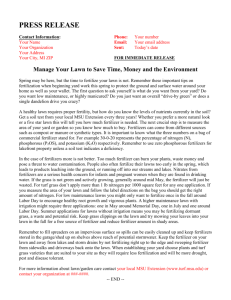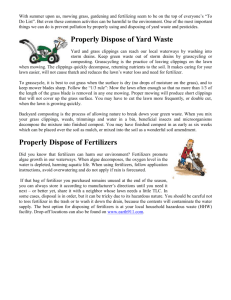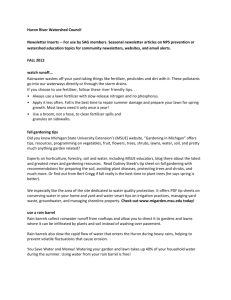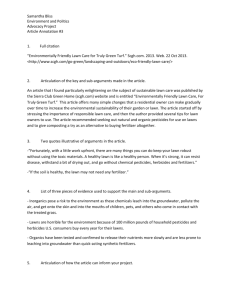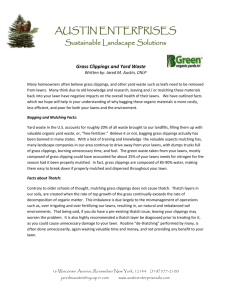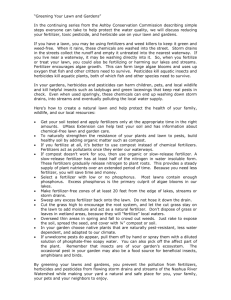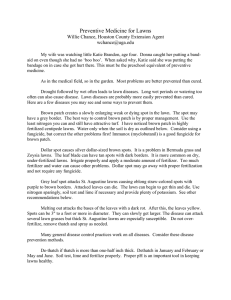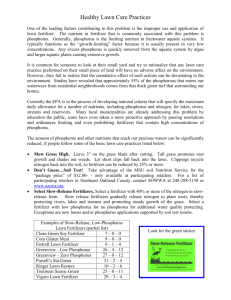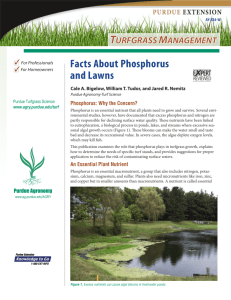Lawns & Phosphorus
advertisement
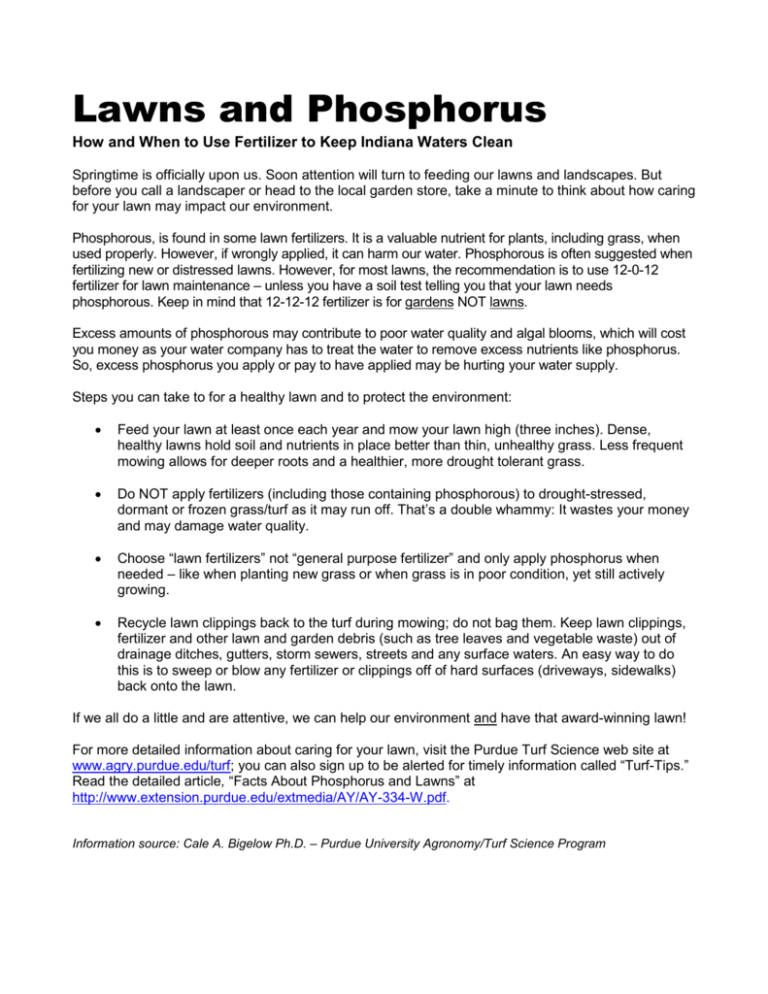
Lawns and Phosphorus How and When to Use Fertilizer to Keep Indiana Waters Clean Springtime is officially upon us. Soon attention will turn to feeding our lawns and landscapes. But before you call a landscaper or head to the local garden store, take a minute to think about how caring for your lawn may impact our environment. Phosphorous, is found in some lawn fertilizers. It is a valuable nutrient for plants, including grass, when used properly. However, if wrongly applied, it can harm our water. Phosphorous is often suggested when fertilizing new or distressed lawns. However, for most lawns, the recommendation is to use 12-0-12 fertilizer for lawn maintenance – unless you have a soil test telling you that your lawn needs phosphorous. Keep in mind that 12-12-12 fertilizer is for gardens NOT lawns. Excess amounts of phosphorous may contribute to poor water quality and algal blooms, which will cost you money as your water company has to treat the water to remove excess nutrients like phosphorus. So, excess phosphorus you apply or pay to have applied may be hurting your water supply. Steps you can take to for a healthy lawn and to protect the environment: Feed your lawn at least once each year and mow your lawn high (three inches). Dense, healthy lawns hold soil and nutrients in place better than thin, unhealthy grass. Less frequent mowing allows for deeper roots and a healthier, more drought tolerant grass. Do NOT apply fertilizers (including those containing phosphorous) to drought-stressed, dormant or frozen grass/turf as it may run off. That’s a double whammy: It wastes your money and may damage water quality. Choose “lawn fertilizers” not “general purpose fertilizer” and only apply phosphorus when needed – like when planting new grass or when grass is in poor condition, yet still actively growing. Recycle lawn clippings back to the turf during mowing; do not bag them. Keep lawn clippings, fertilizer and other lawn and garden debris (such as tree leaves and vegetable waste) out of drainage ditches, gutters, storm sewers, streets and any surface waters. An easy way to do this is to sweep or blow any fertilizer or clippings off of hard surfaces (driveways, sidewalks) back onto the lawn. If we all do a little and are attentive, we can help our environment and have that award-winning lawn! For more detailed information about caring for your lawn, visit the Purdue Turf Science web site at www.agry.purdue.edu/turf; you can also sign up to be alerted for timely information called “Turf-Tips.” Read the detailed article, “Facts About Phosphorus and Lawns” at http://www.extension.purdue.edu/extmedia/AY/AY-334-W.pdf. Information source: Cale A. Bigelow Ph.D. – Purdue University Agronomy/Turf Science Program

